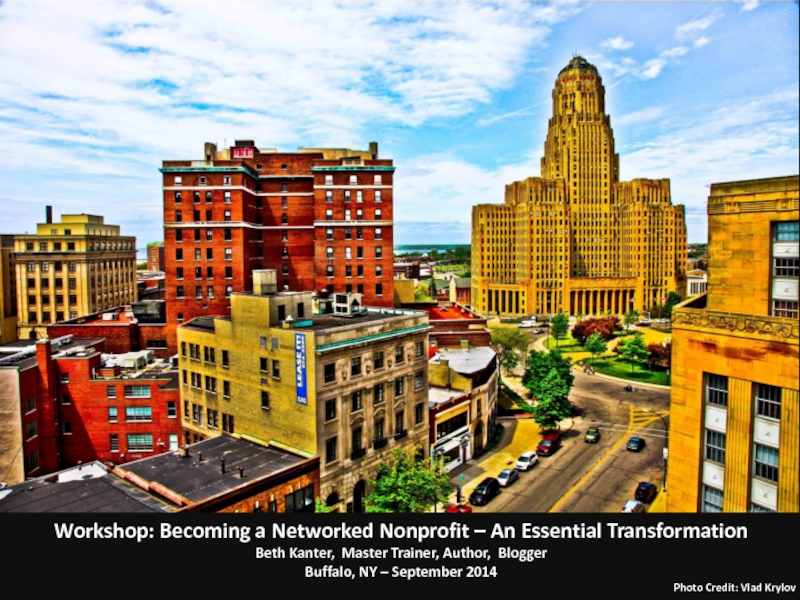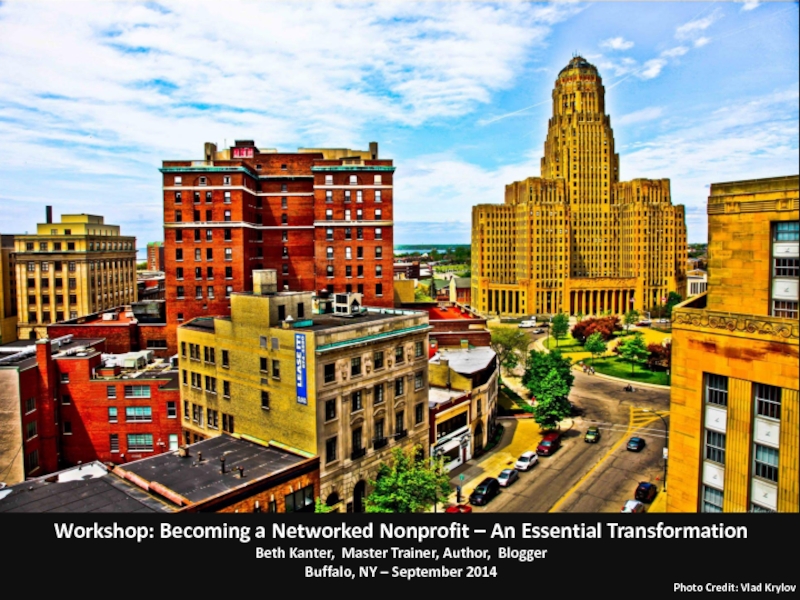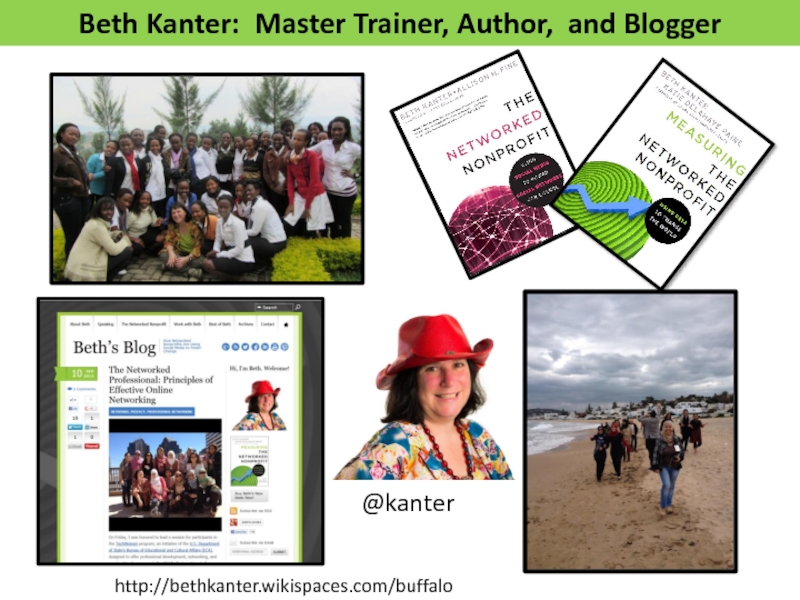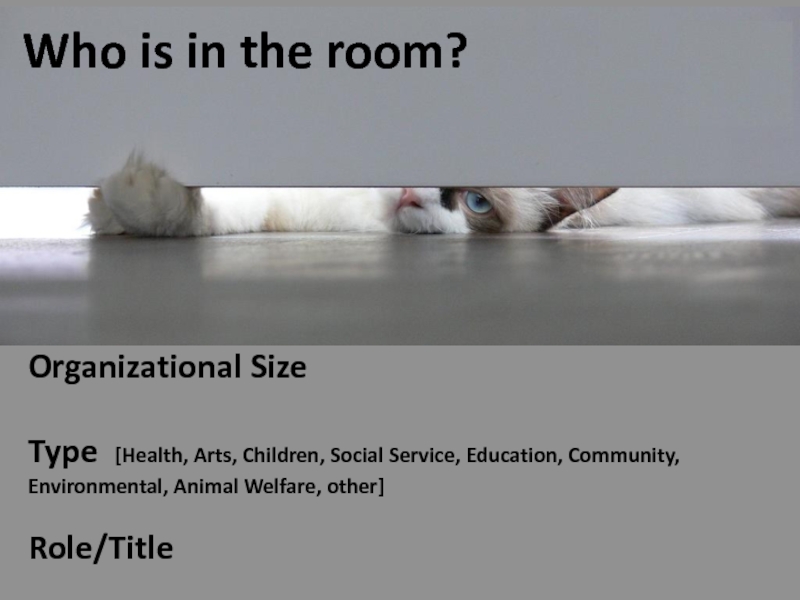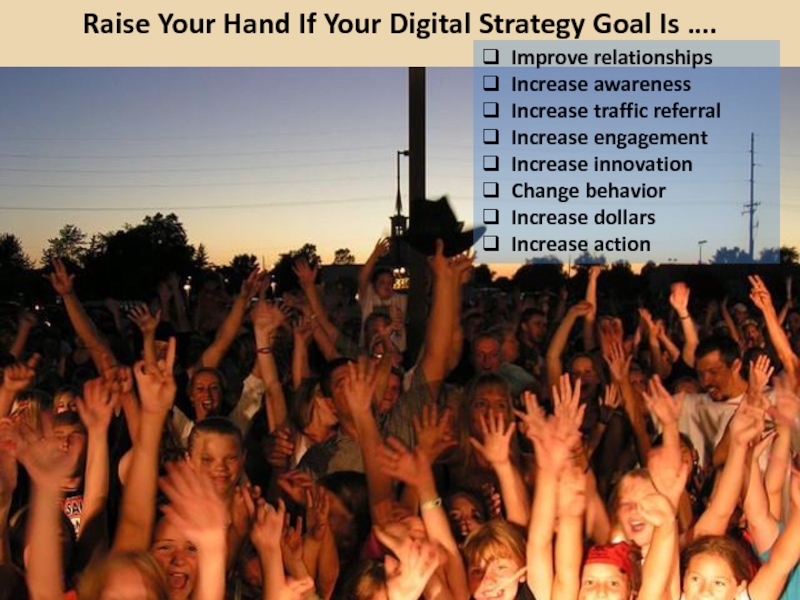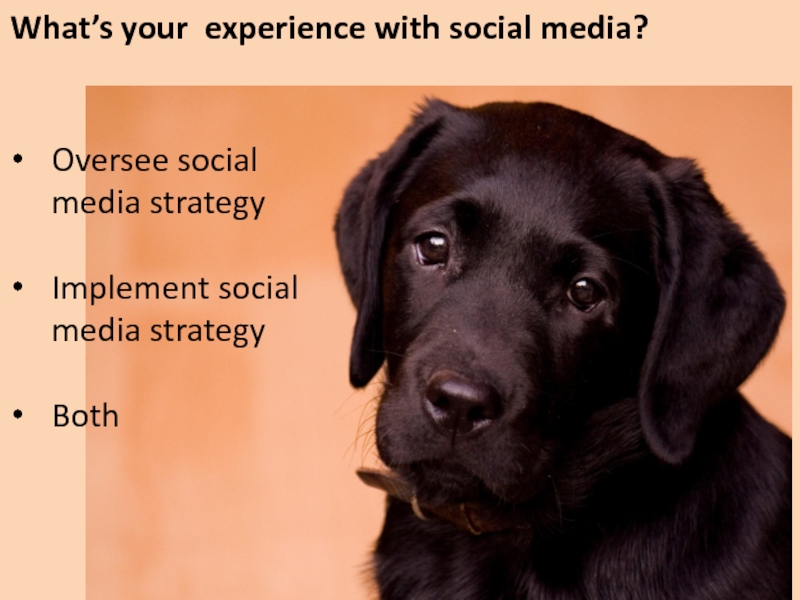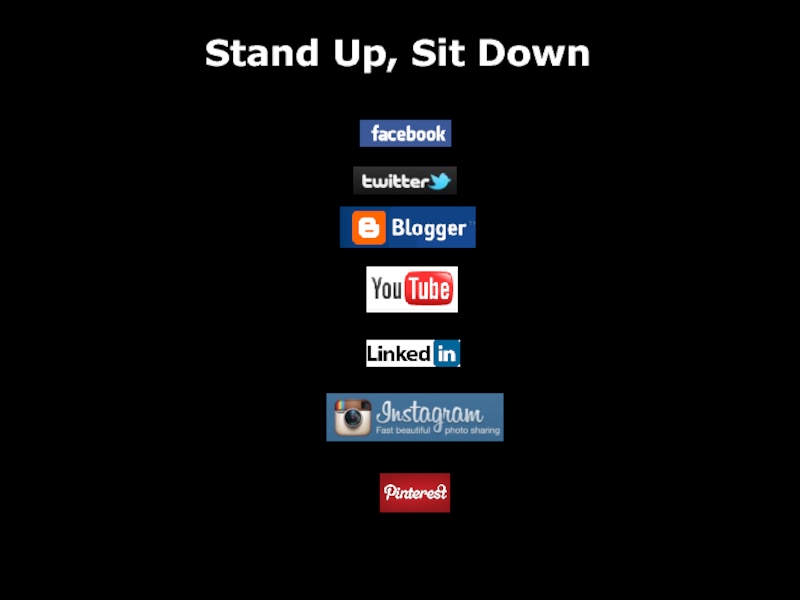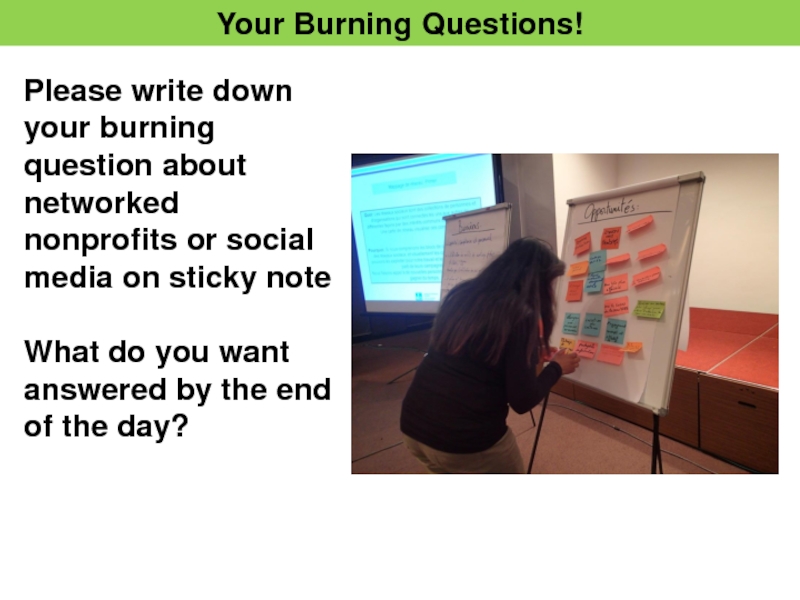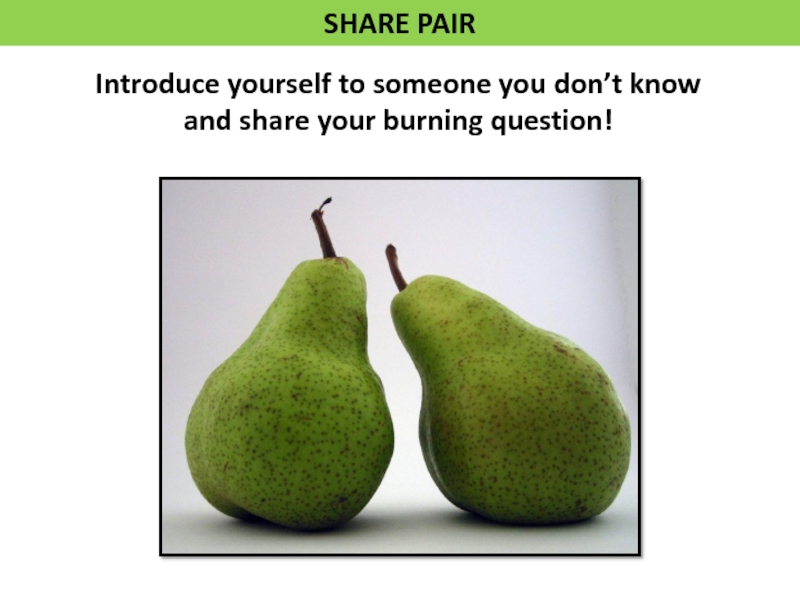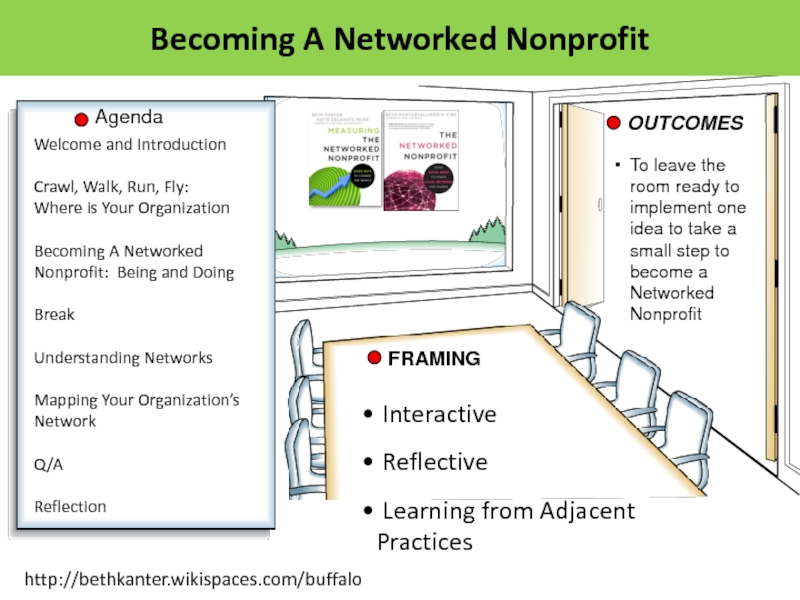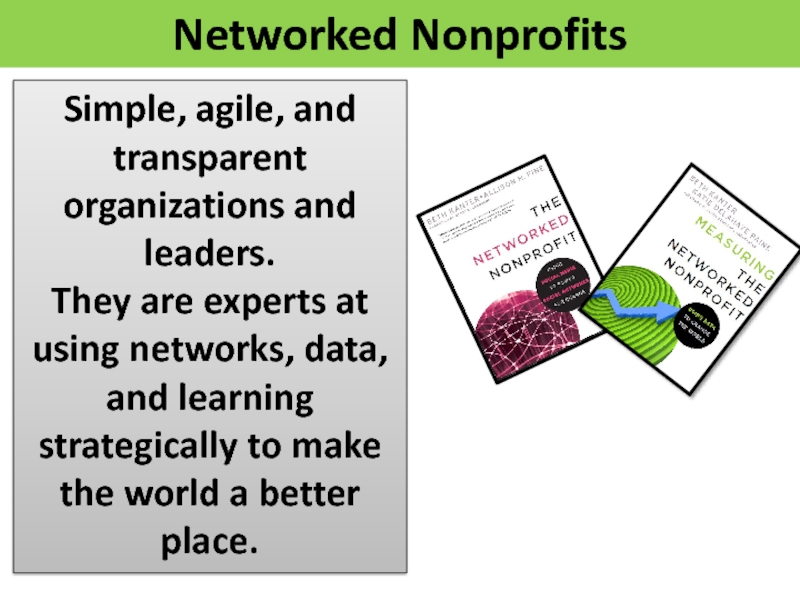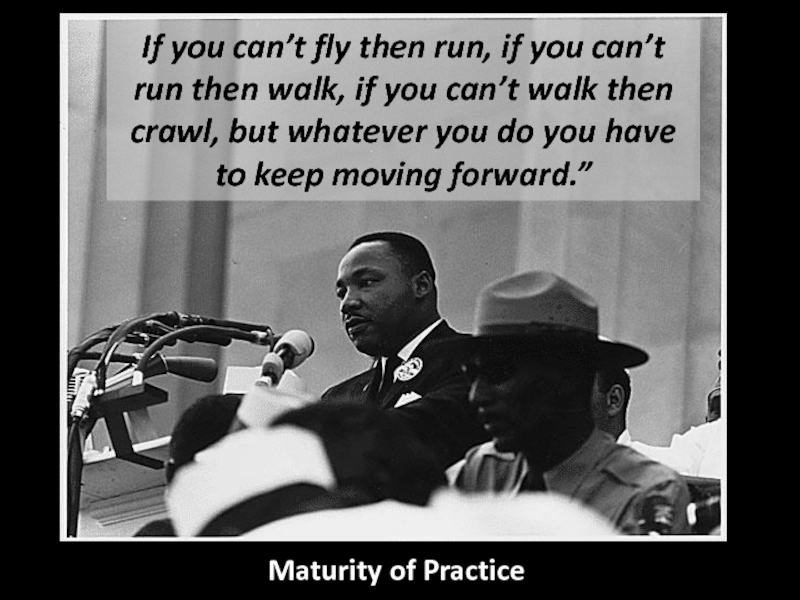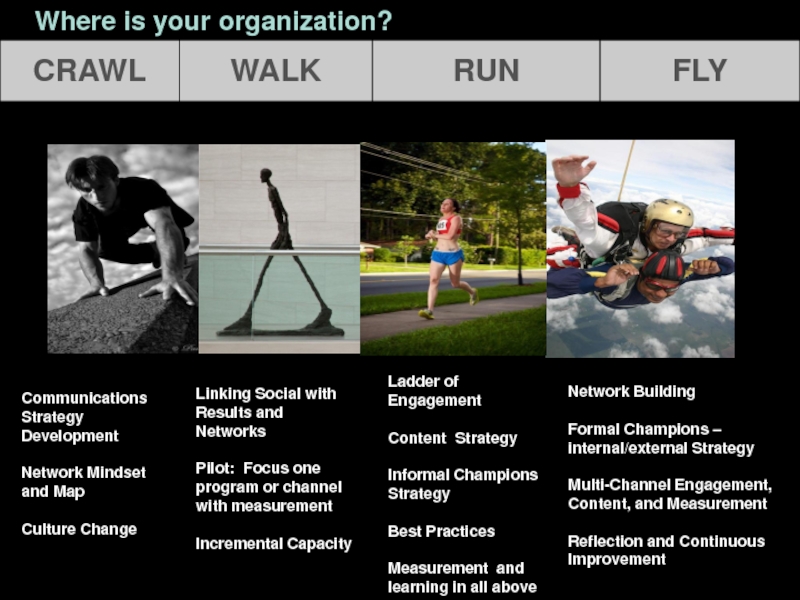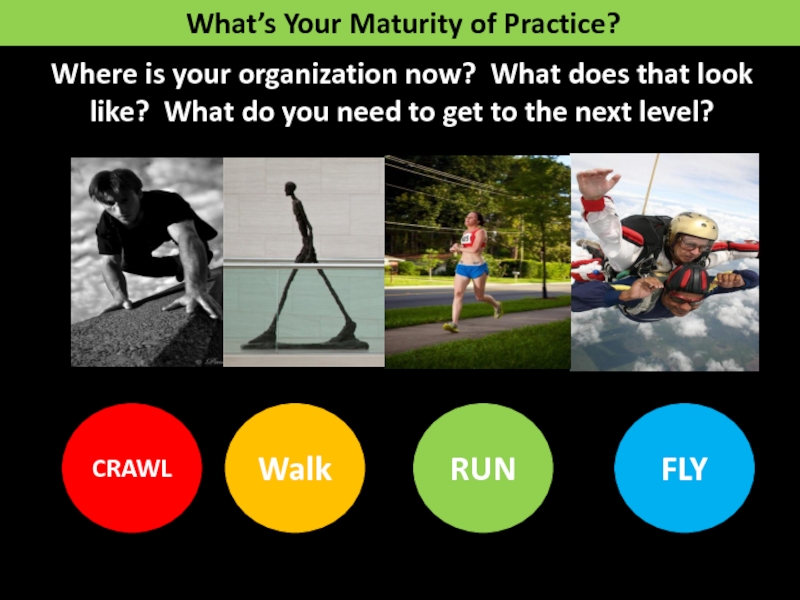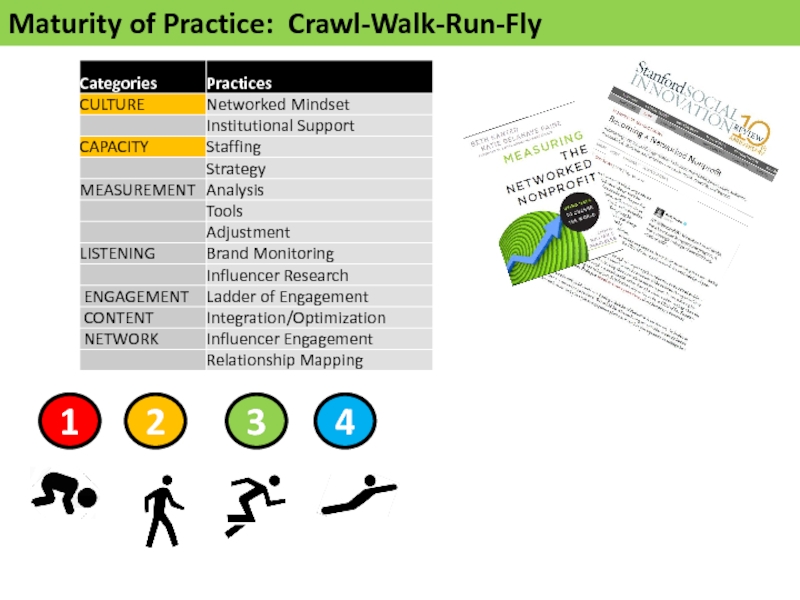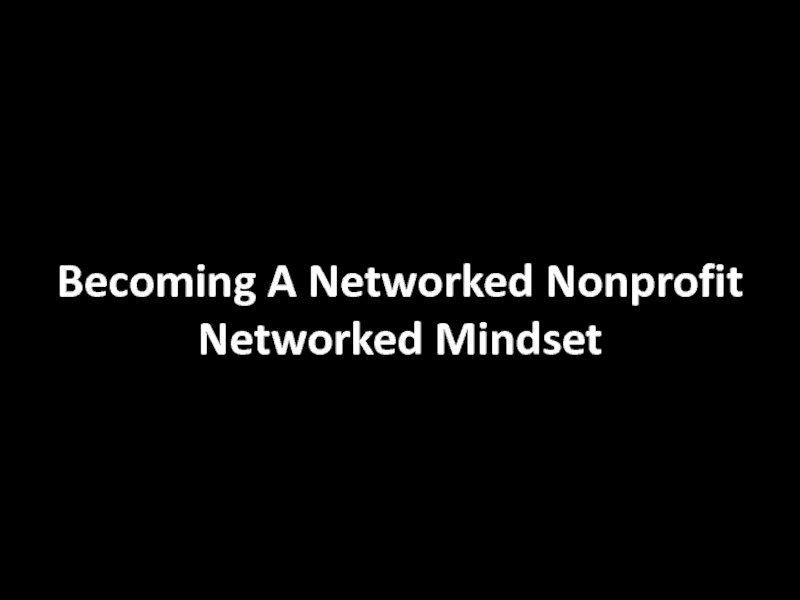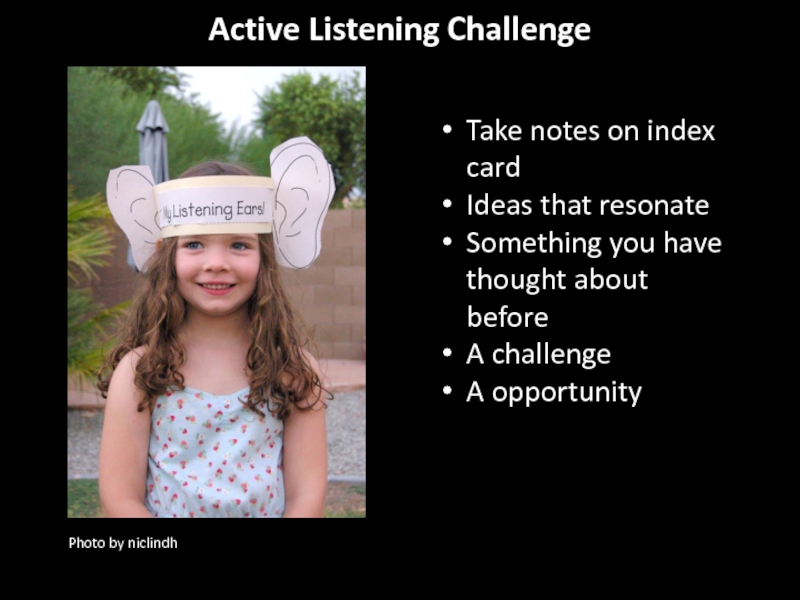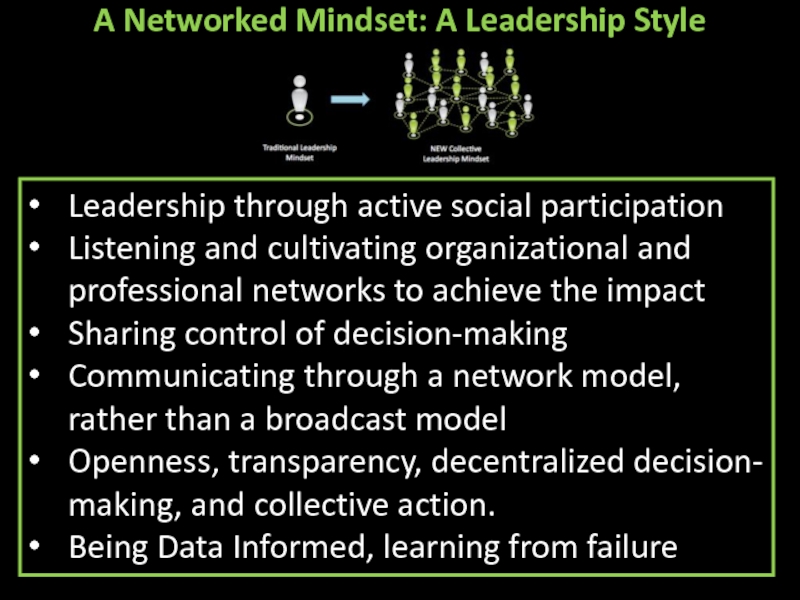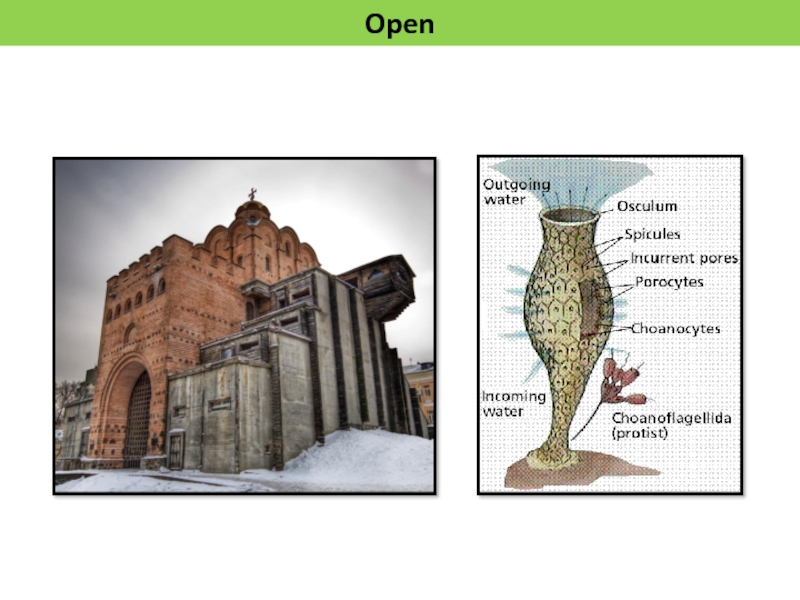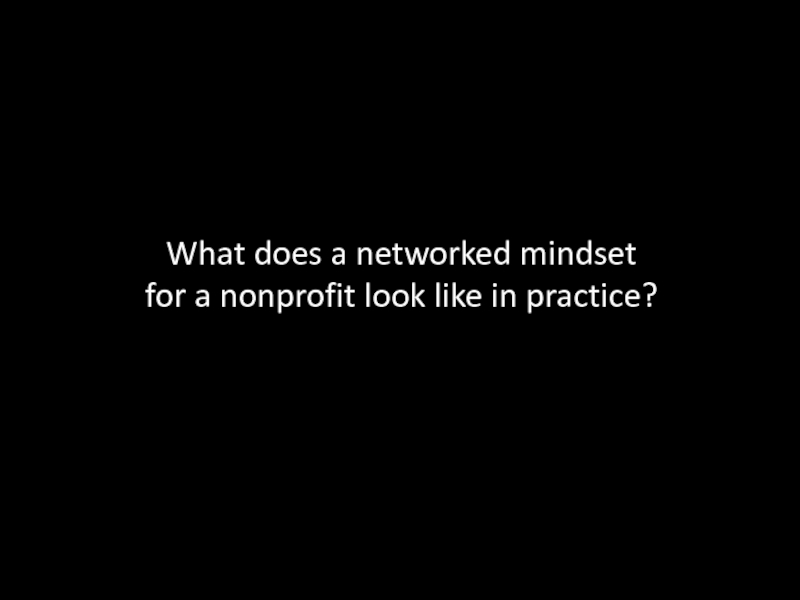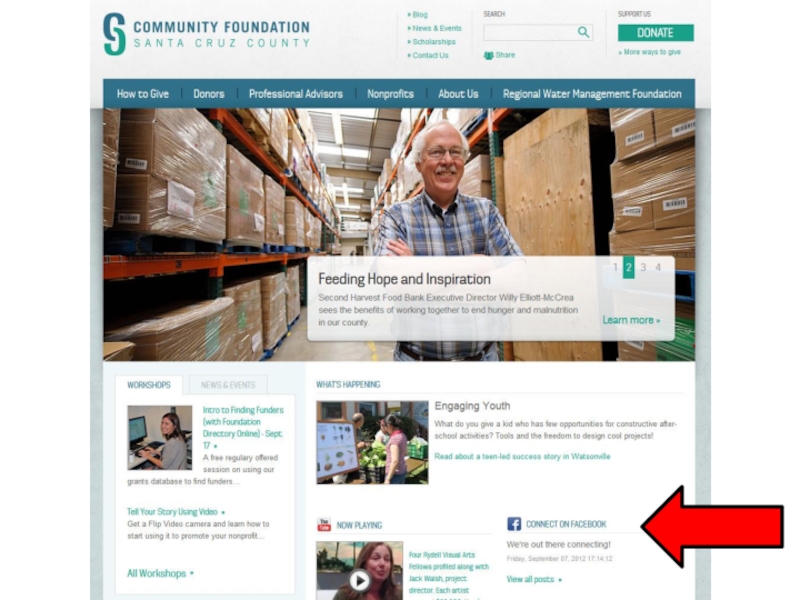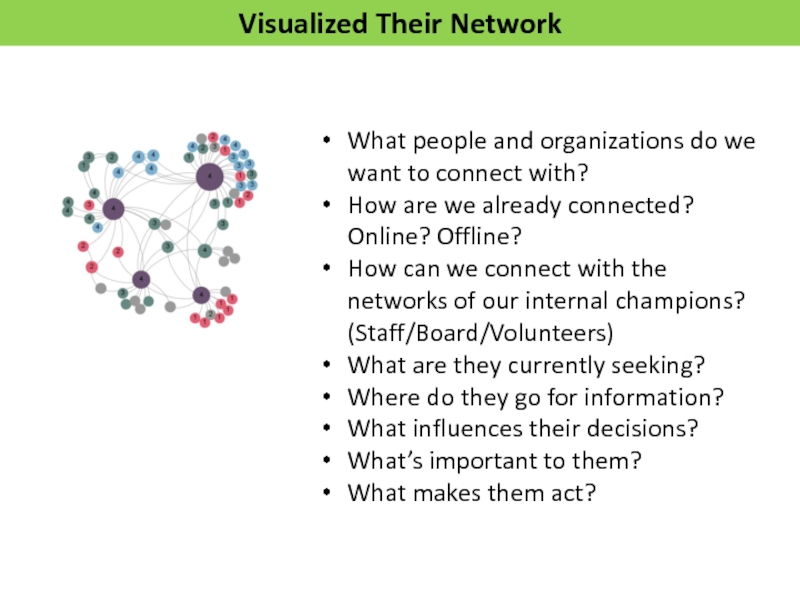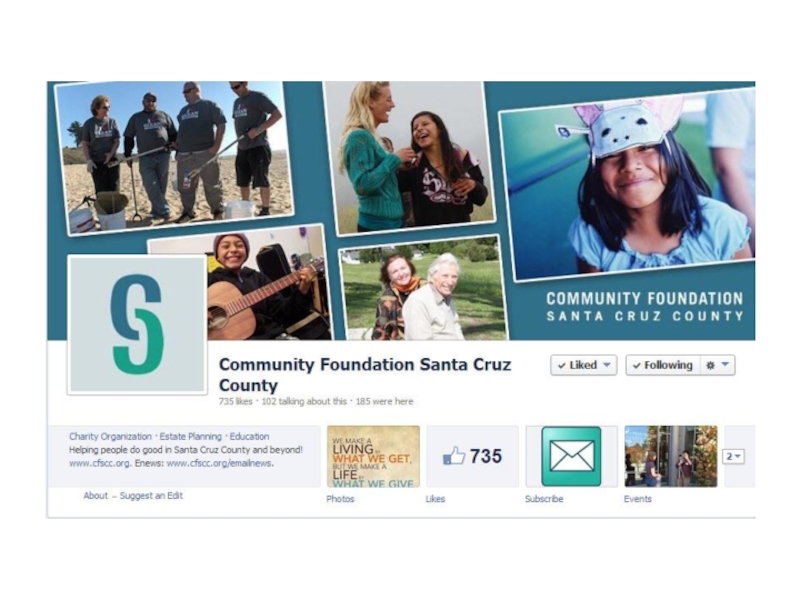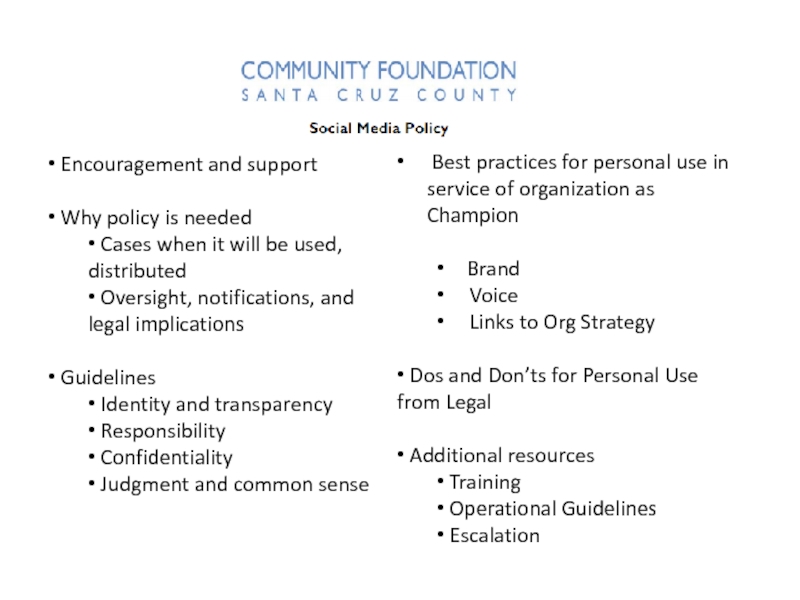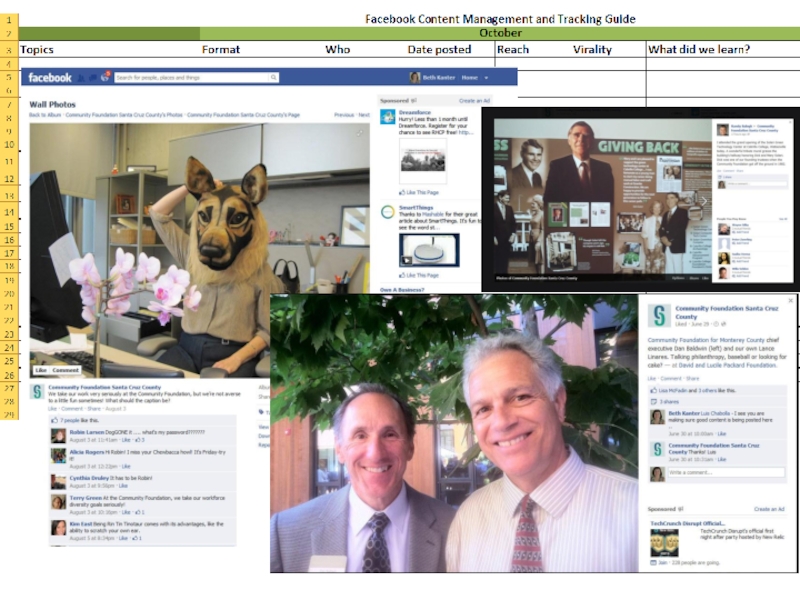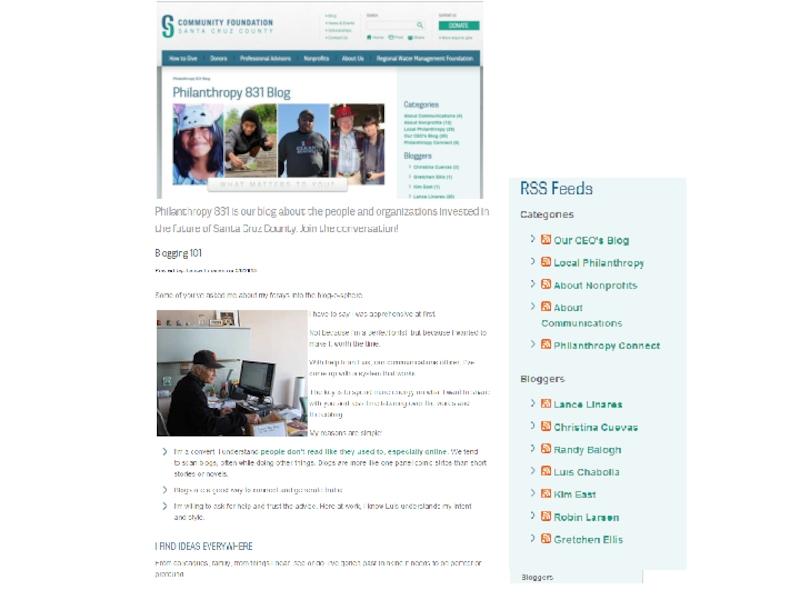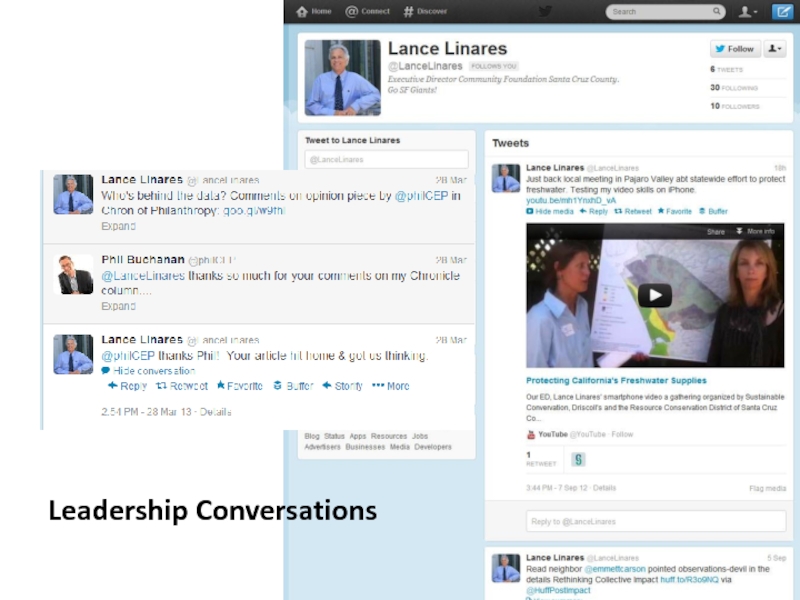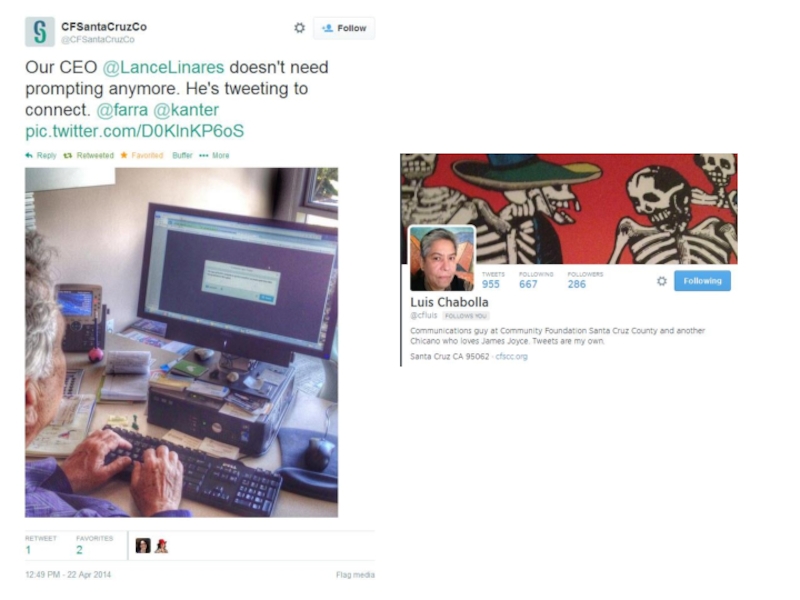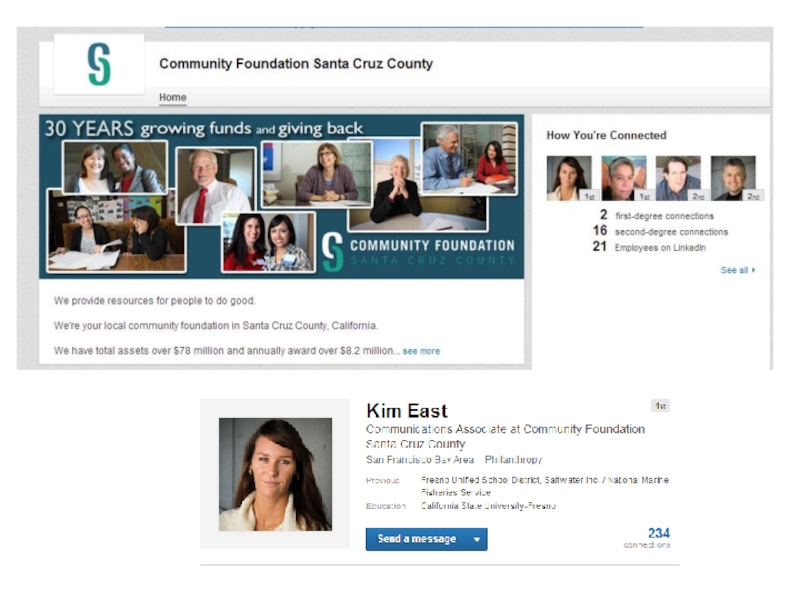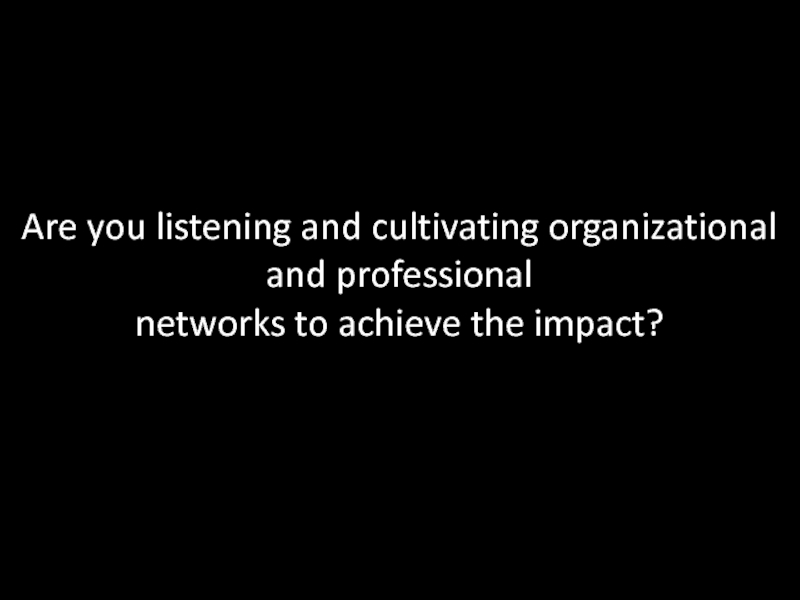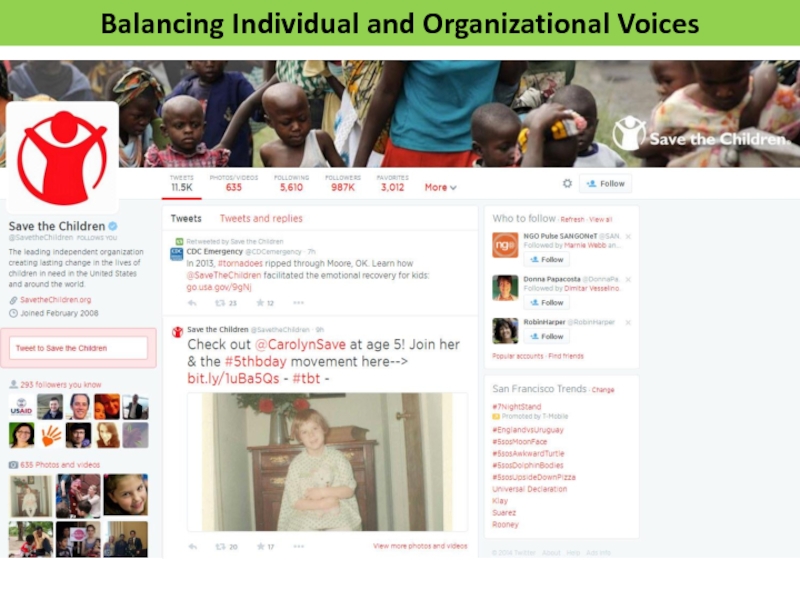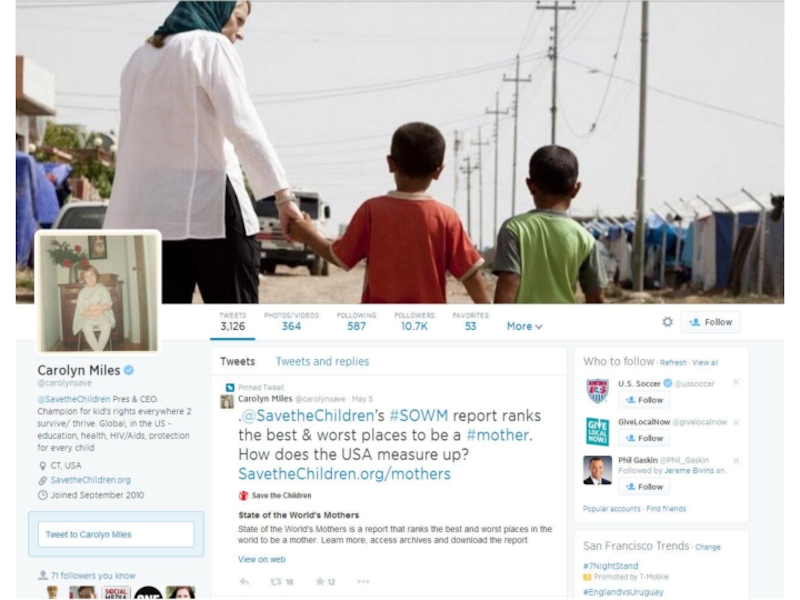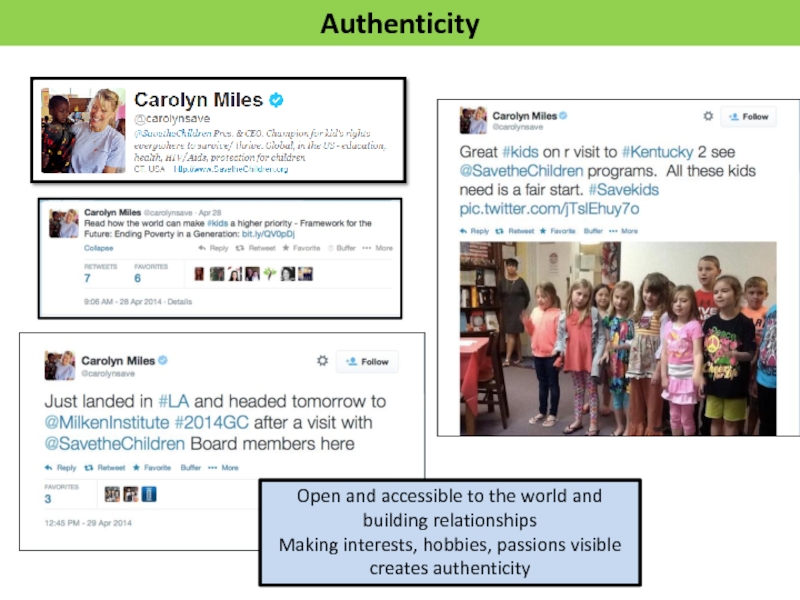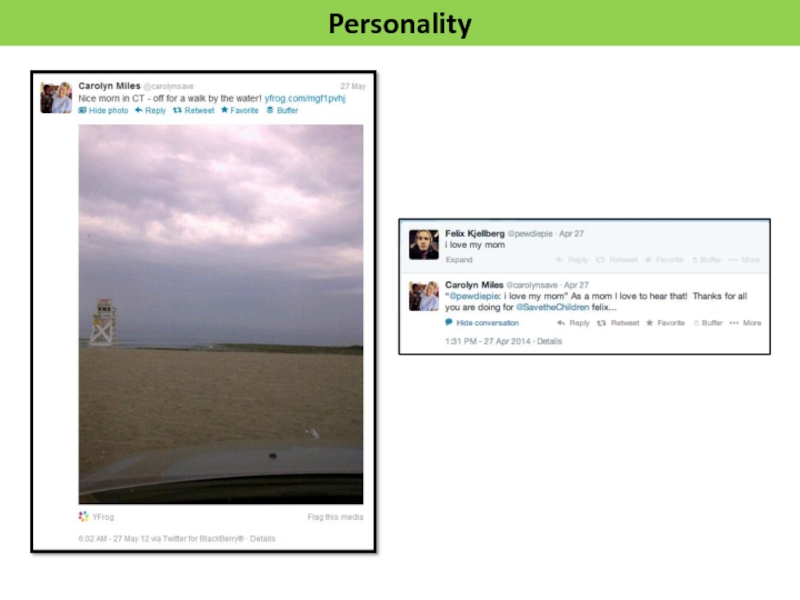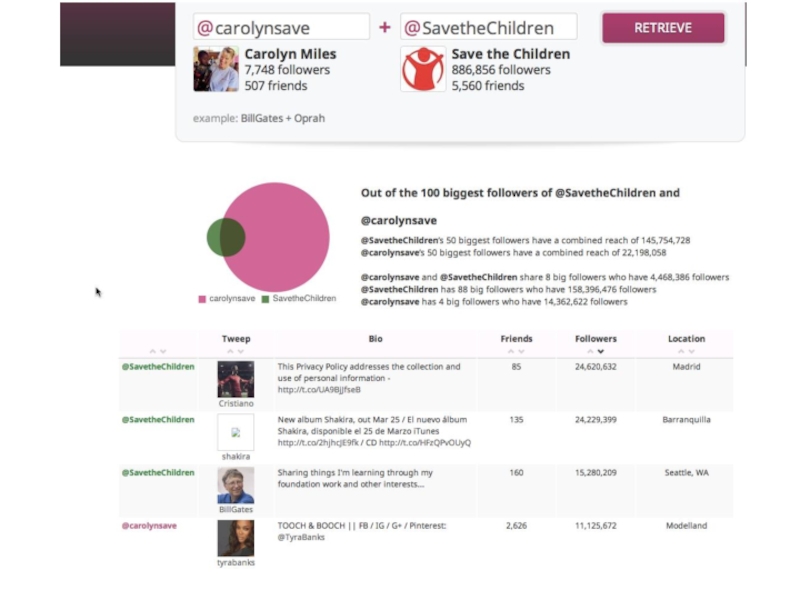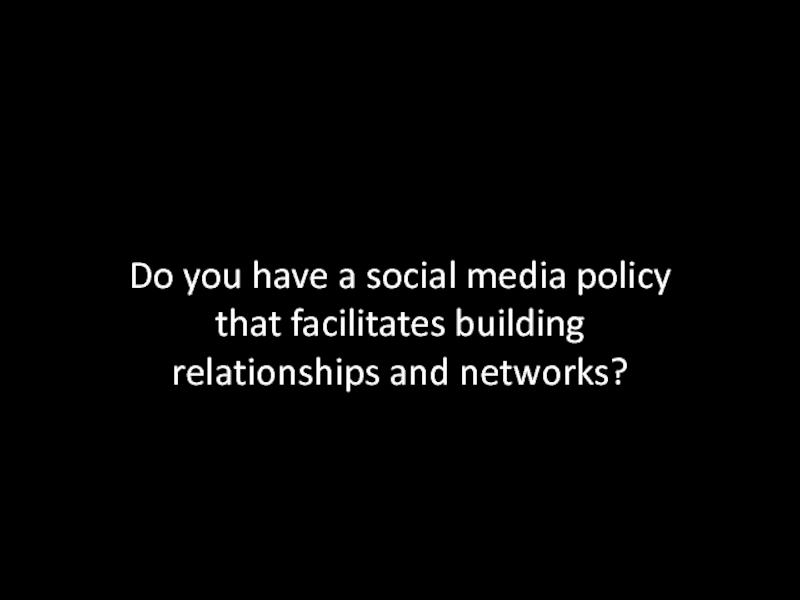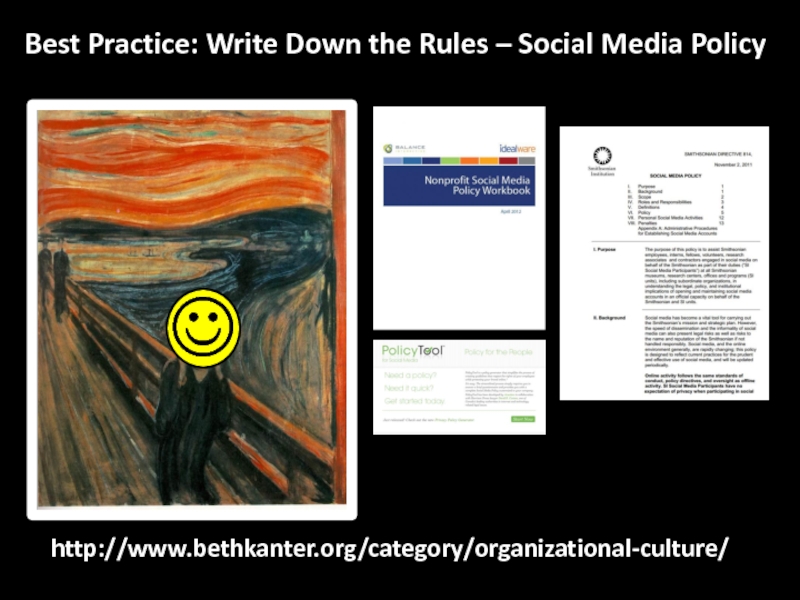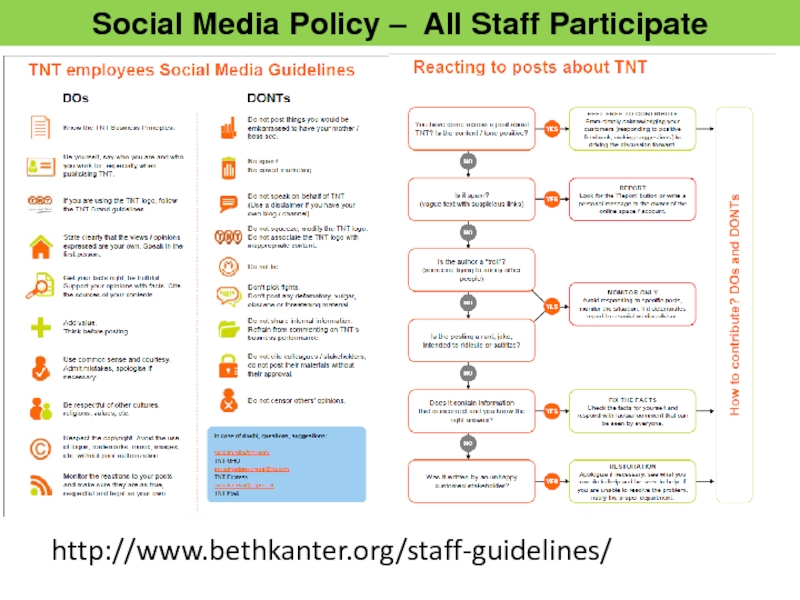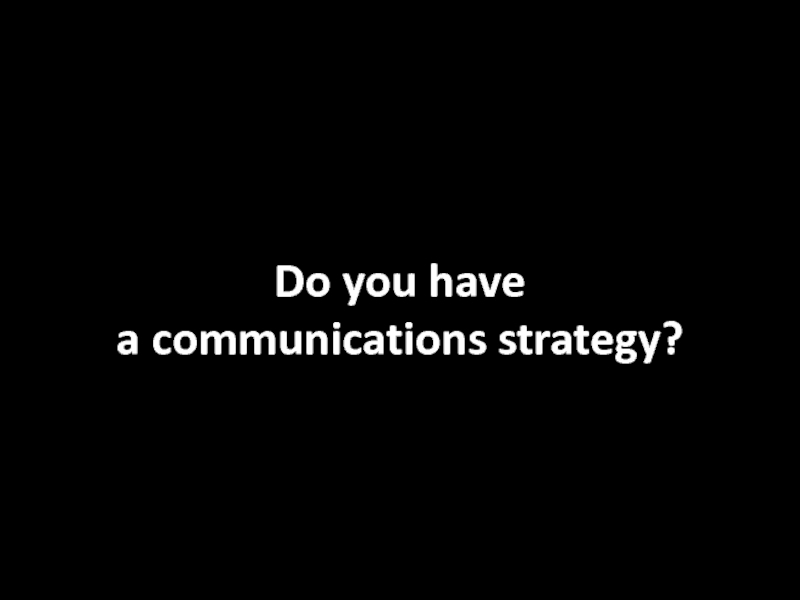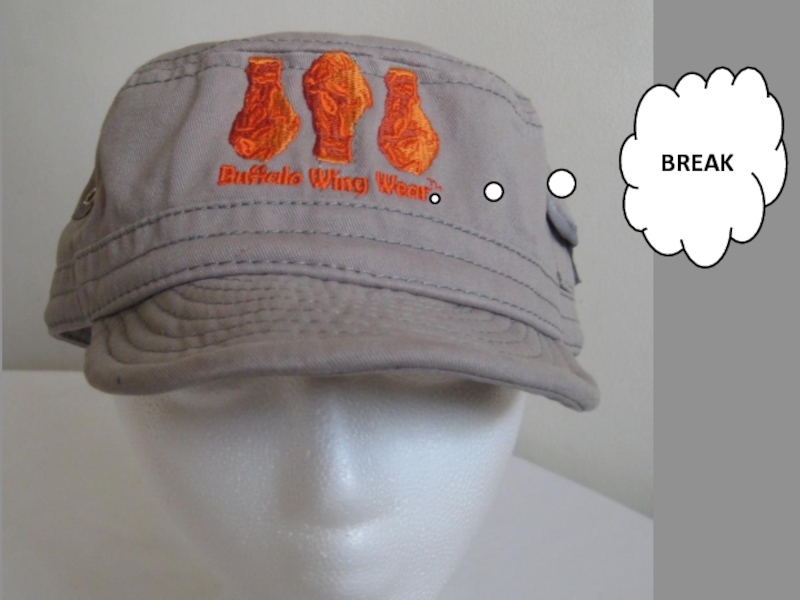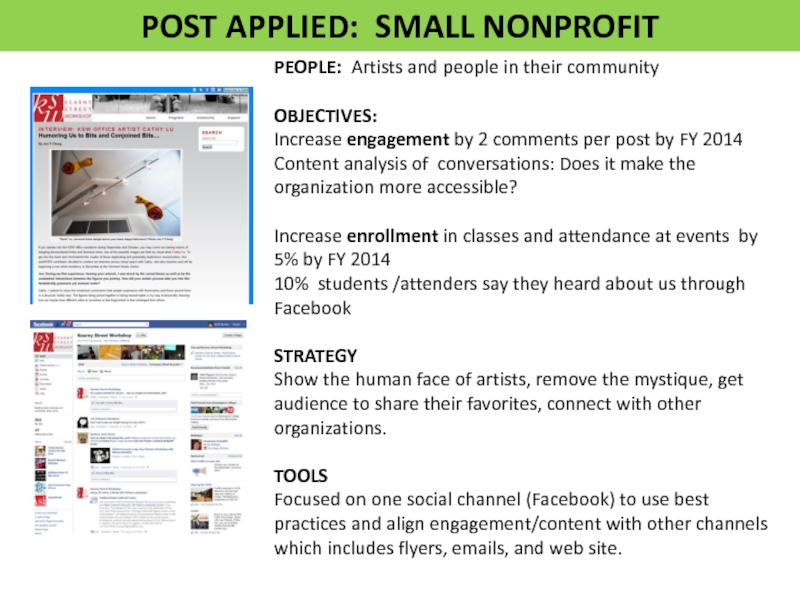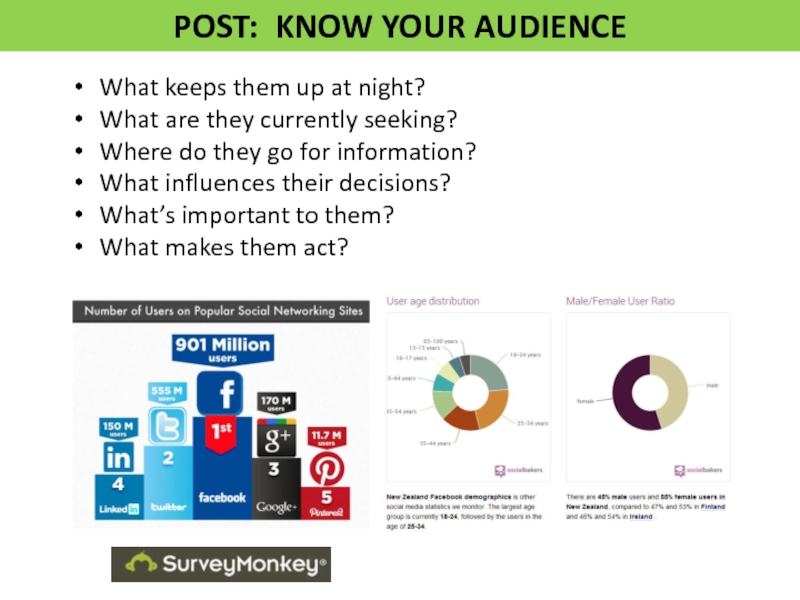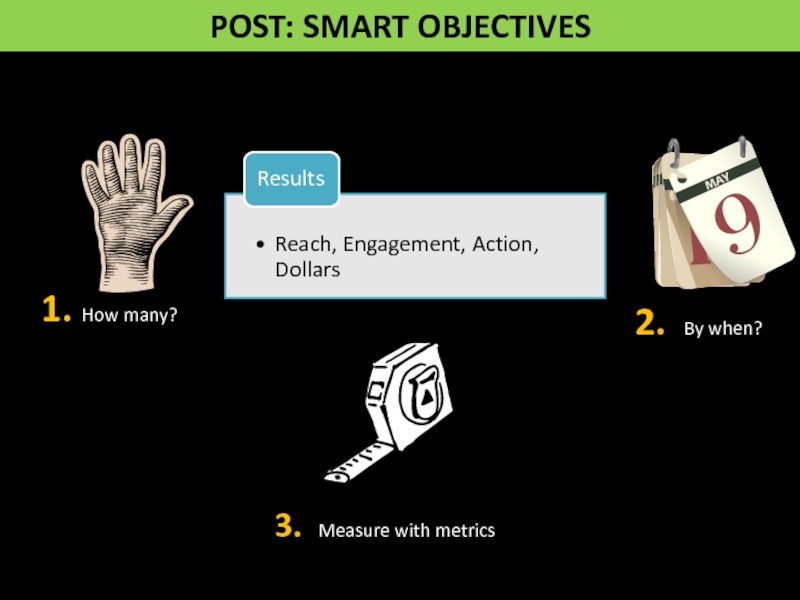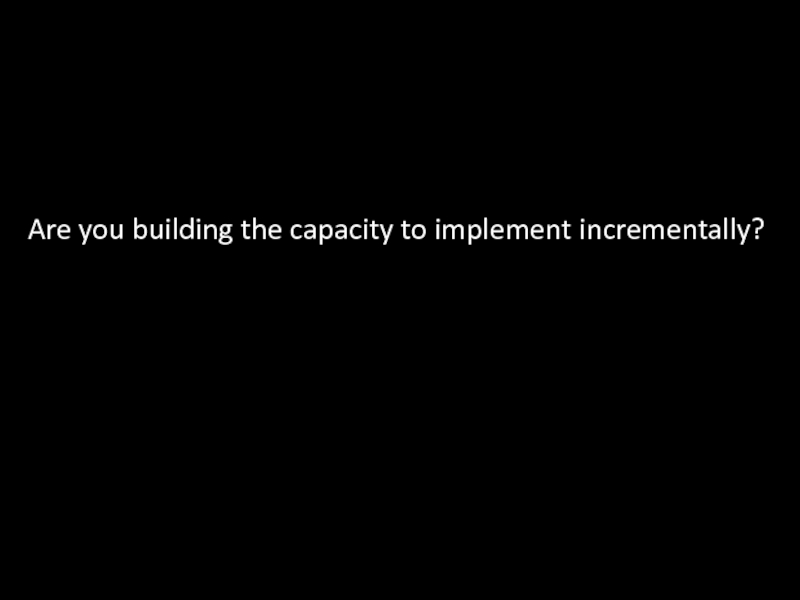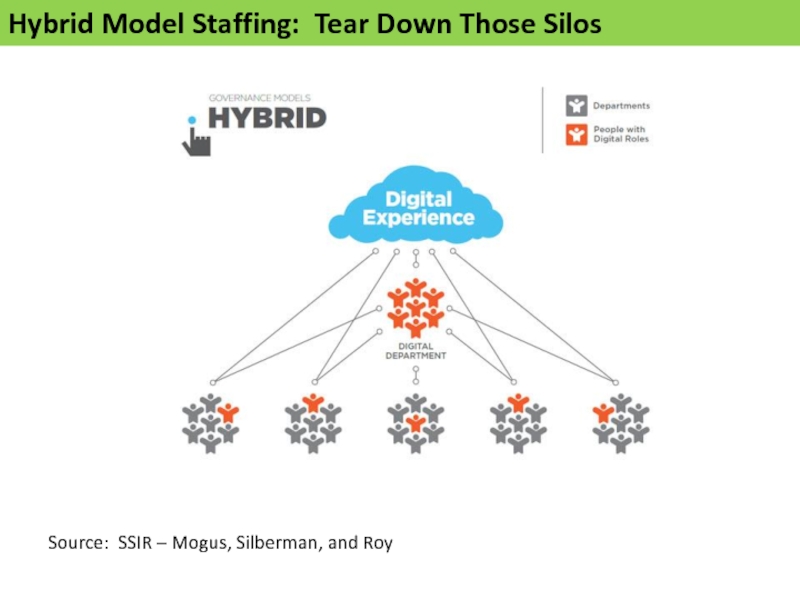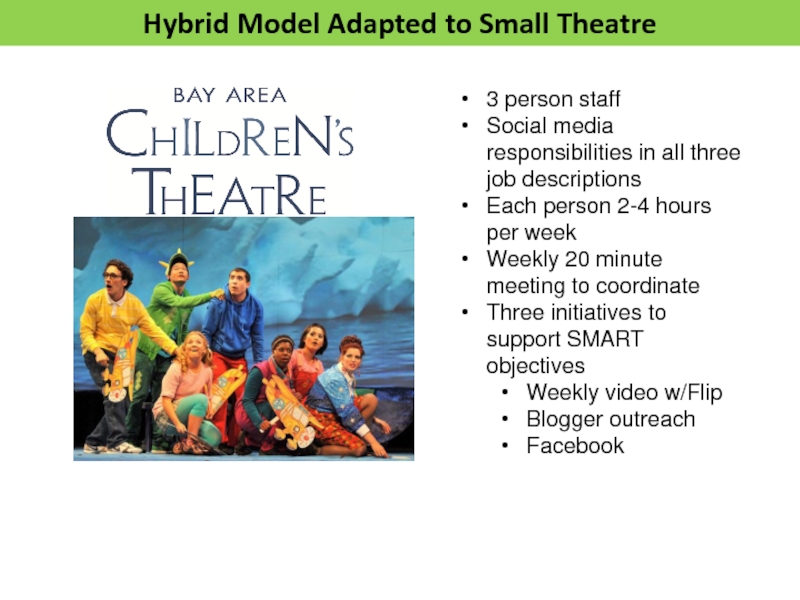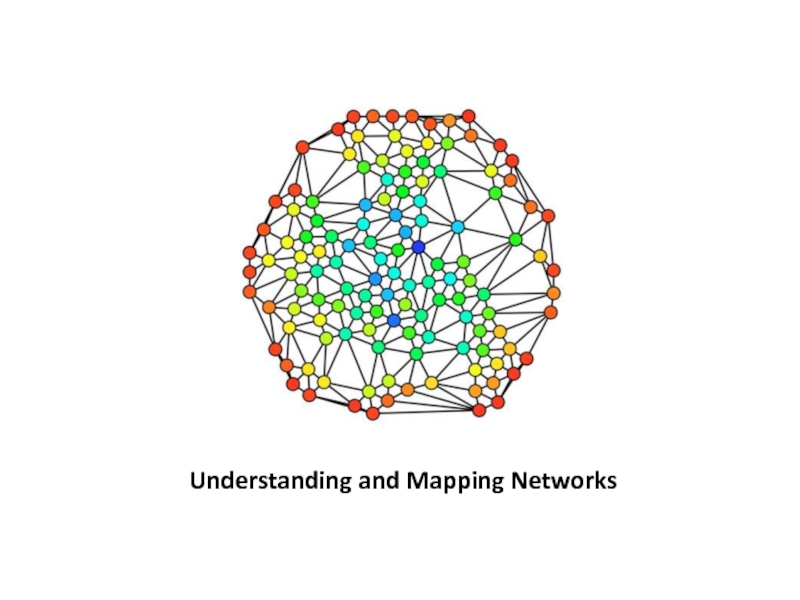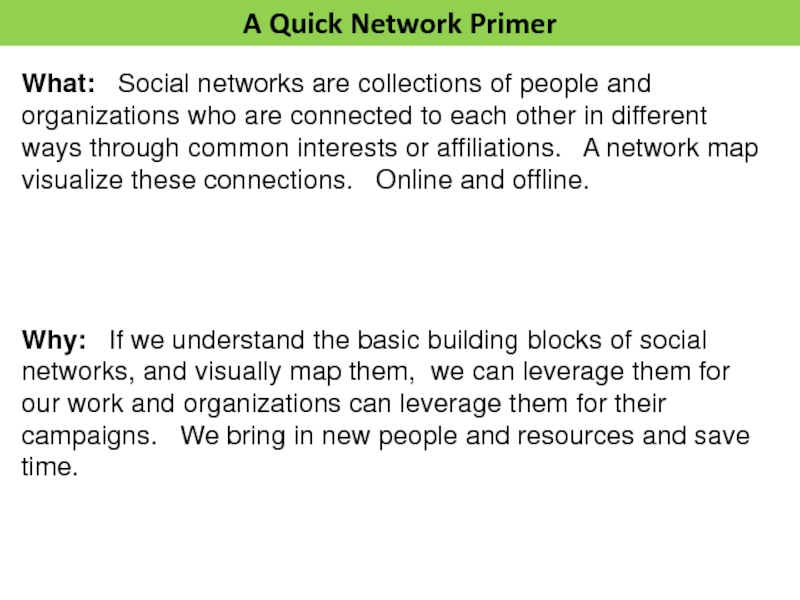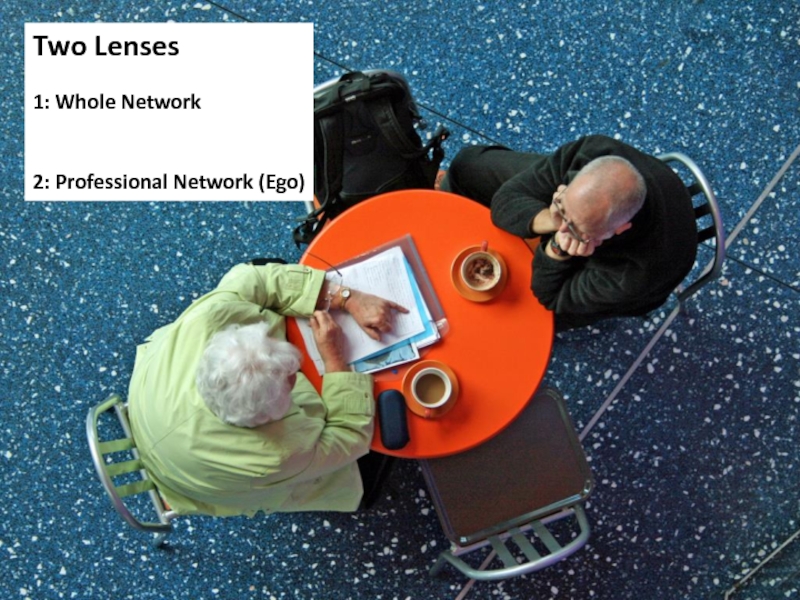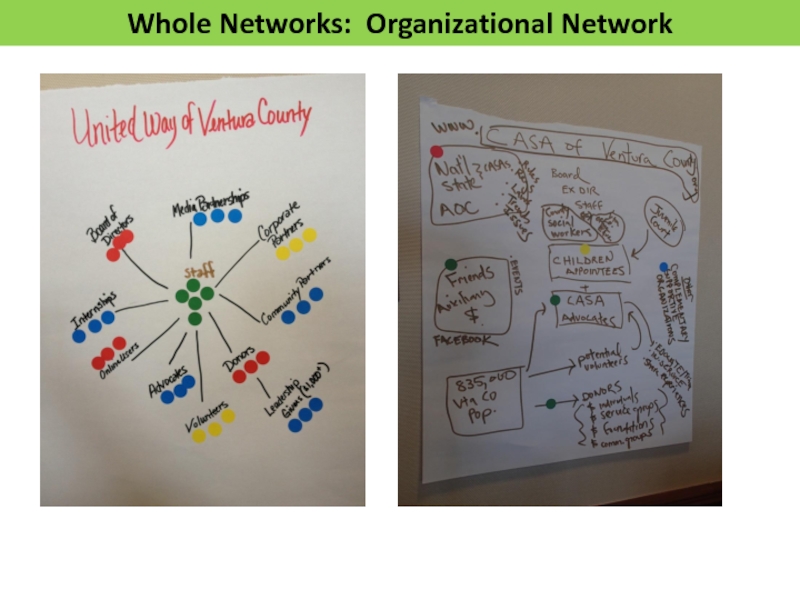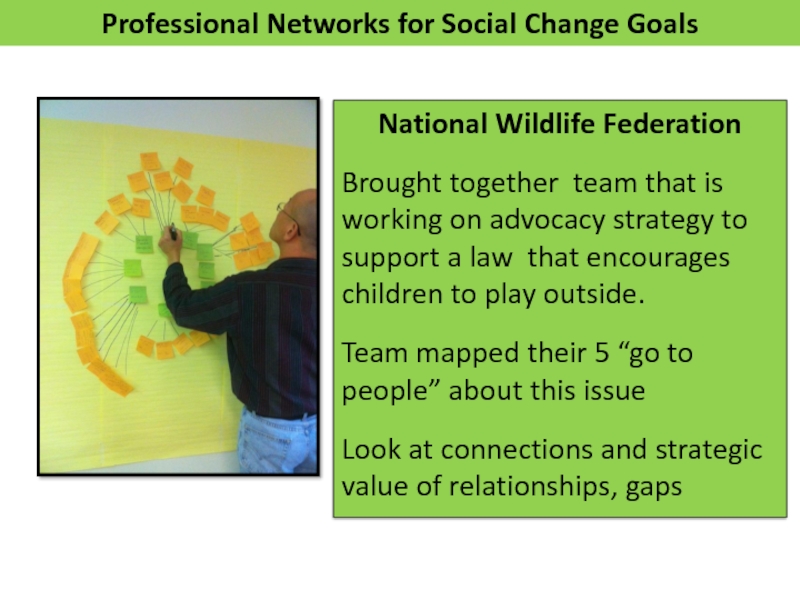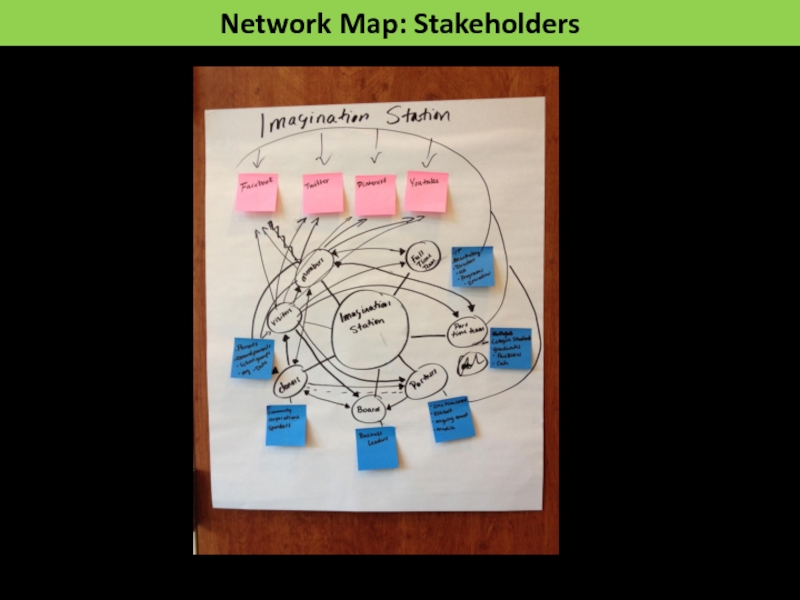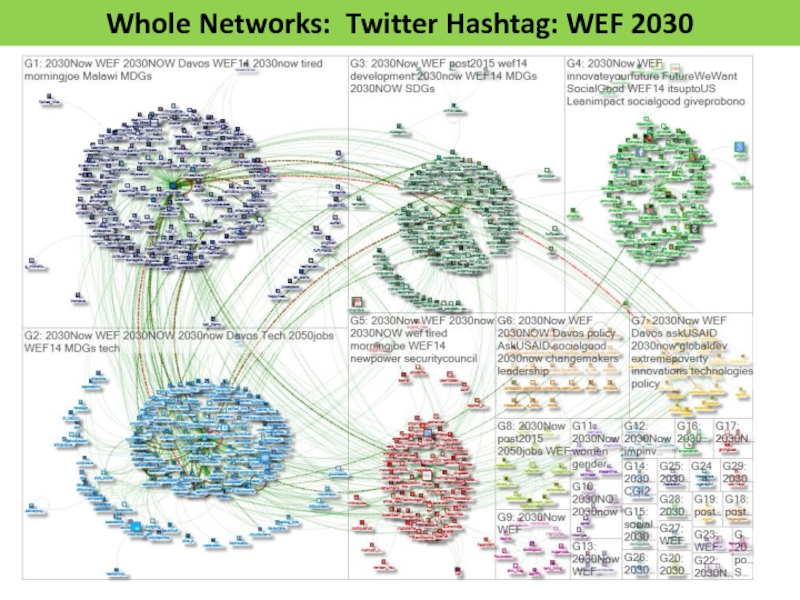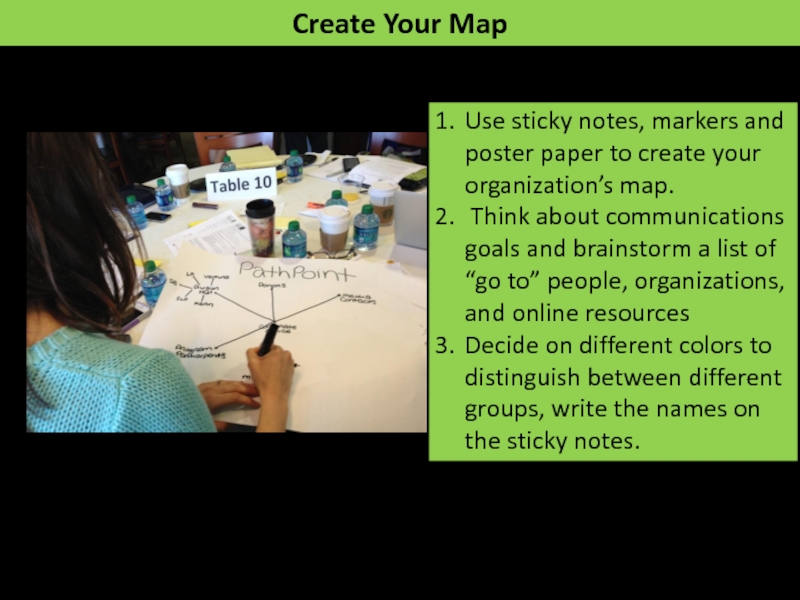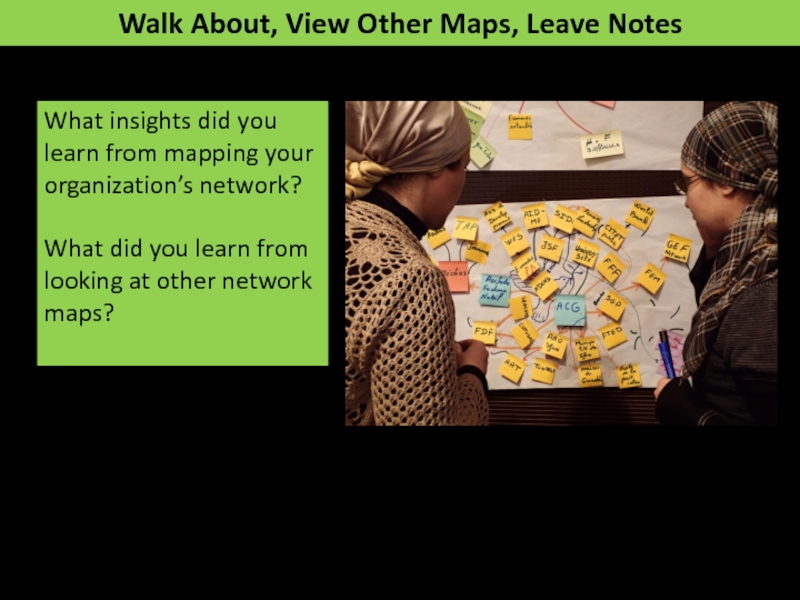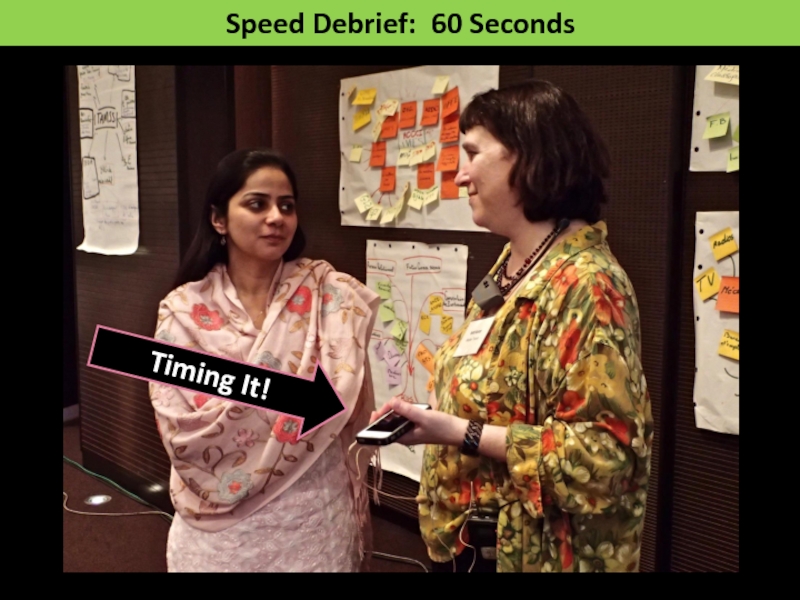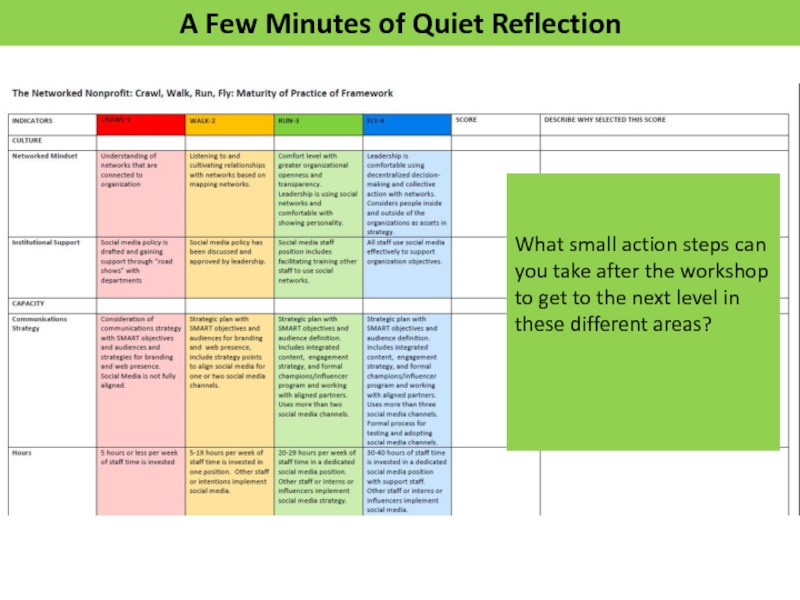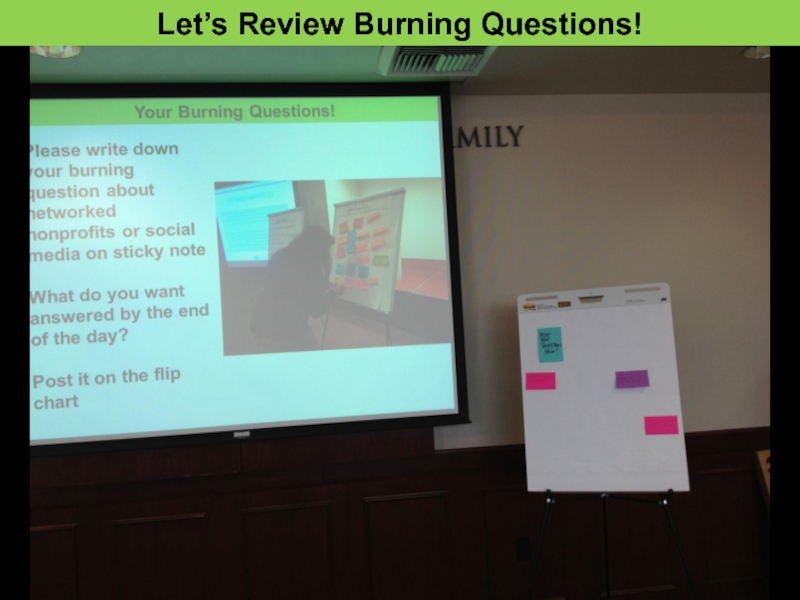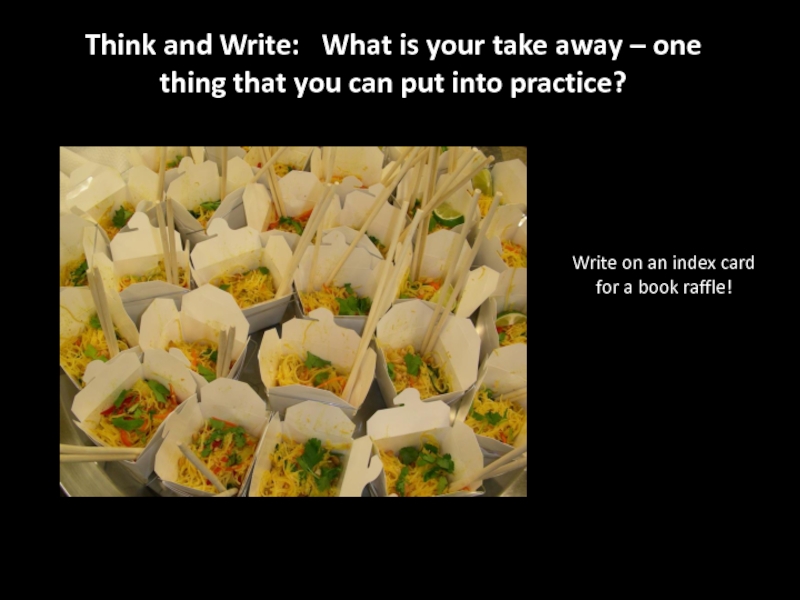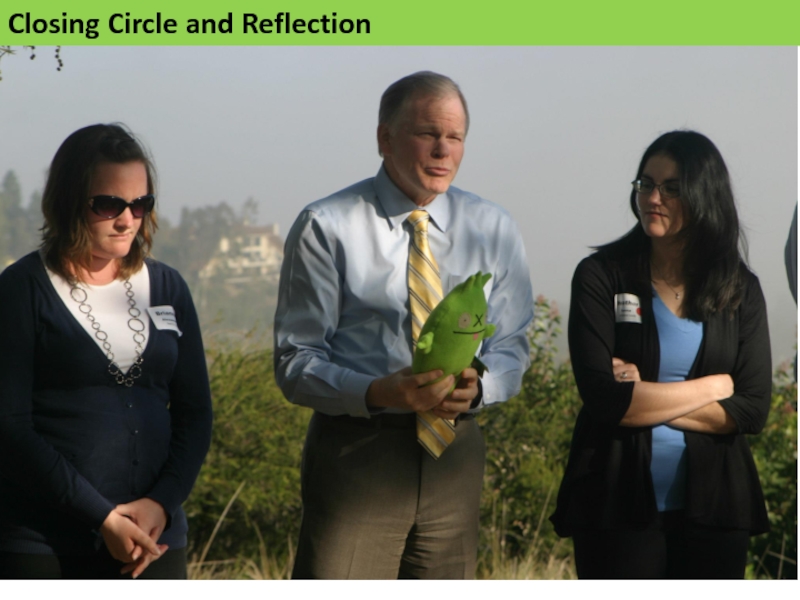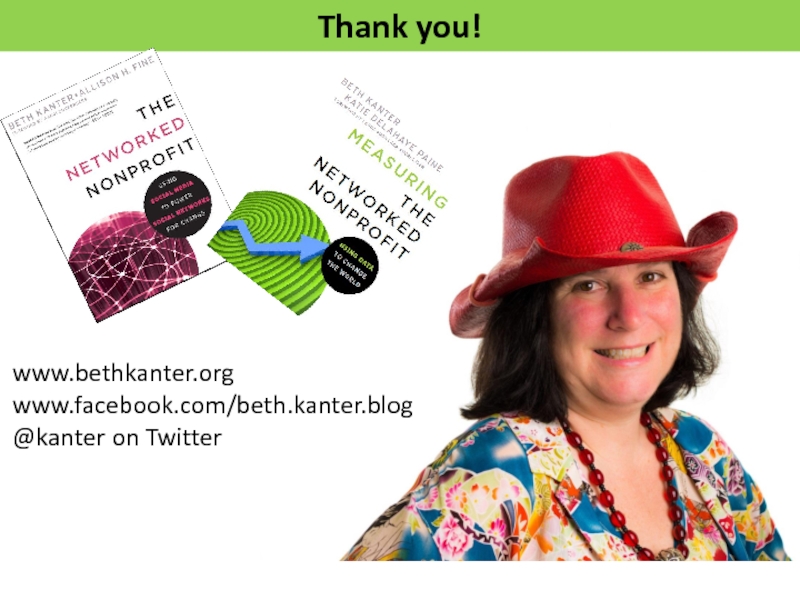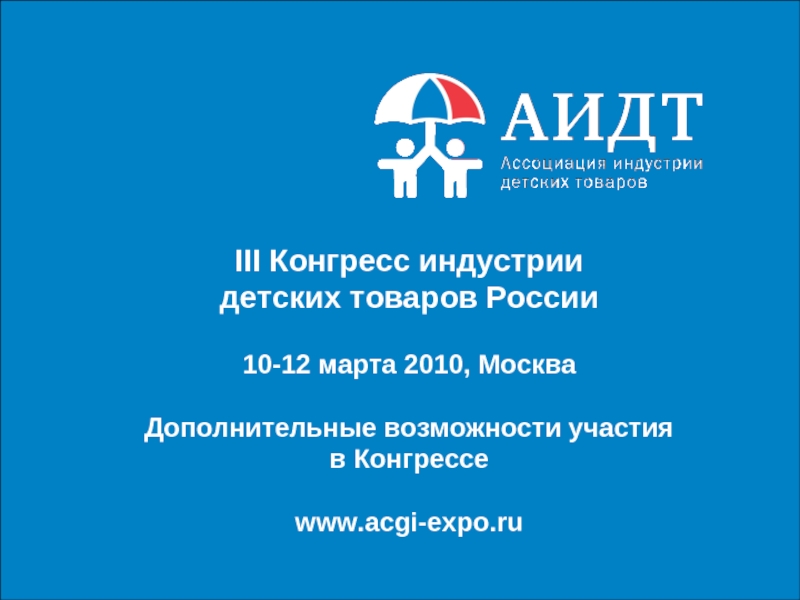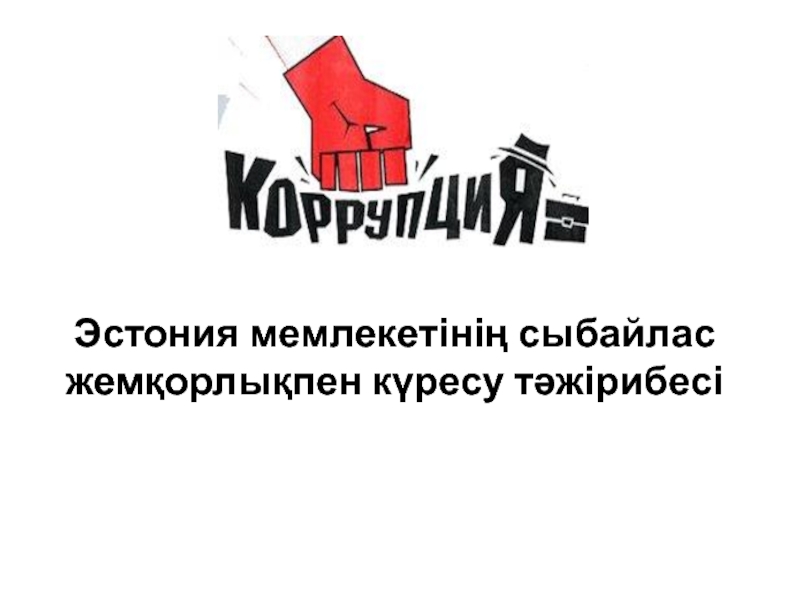- Главная
- Разное
- Дизайн
- Бизнес и предпринимательство
- Аналитика
- Образование
- Развлечения
- Красота и здоровье
- Финансы
- Государство
- Путешествия
- Спорт
- Недвижимость
- Армия
- Графика
- Культурология
- Еда и кулинария
- Лингвистика
- Английский язык
- Астрономия
- Алгебра
- Биология
- География
- Детские презентации
- Информатика
- История
- Литература
- Маркетинг
- Математика
- Медицина
- Менеджмент
- Музыка
- МХК
- Немецкий язык
- ОБЖ
- Обществознание
- Окружающий мир
- Педагогика
- Русский язык
- Технология
- Физика
- Философия
- Химия
- Шаблоны, картинки для презентаций
- Экология
- Экономика
- Юриспруденция
Workshop: Becoming a Networked Nonprofit – An Essential Transformation Beth Kanter, Master Trainer, Author, Blogger Buffalo, NY – September 2014 Photo Credit: Vlad Krylov презентация
Содержание
- 1. Workshop: Becoming a Networked Nonprofit – An Essential Transformation Beth Kanter, Master Trainer, Author, Blogger Buffalo, NY – September 2014 Photo Credit: Vlad Krylov
- 2. Workshop: Becoming a Networked Nonprofit – An
- 3. Beth Kanter: Master Trainer, Author, and Blogger @kanter http://bethkanter.wikispaces.com/buffalo
- 4. Who is in the room? Organizational
- 5. Raise Your Hand If Your Digital Strategy
- 6. What’s your experience with social media? Oversee
- 7. Stand Up, Sit Down
- 8. Welcome Your Burning Questions! Please write down
- 9. SHARE PAIR Introduce yourself to someone you don’t know and share your burning question!
- 10. To leave the room ready to implement
- 11. Networked Nonprofits Simple, agile, and transparent organizations
- 12. If you can’t fly then run, if
- 13. Where is your organization? Linking Social with
- 14. What’s Your Maturity of Practice? Where
- 15. Maturity of Practice: Crawl-Walk-Run-Fly 1 2 3 4
- 16. Becoming A Networked Nonprofit Networked Mindset
- 17. Take notes on index card Ideas that
- 18. A Networked Mindset: A Leadership Style Leadership
- 19. Open
- 20. What does a networked mindset for a nonprofit look like in practice?
- 22. What people and organizations do we want
- 24. Vision Statement Encouragement and support
- 27. Leadership Conversations
- 30. Are you listening and cultivating organizational and professional networks to achieve the impact?
- 31. Balancing Individual and Organizational Voices
- 33. Authenticity Open and accessible to the world
- 34. Personality
- 36. Do you have a social media policy that facilitates building relationships and networks?
- 37. Best Practice: Write Down the Rules – Social Media Policy http://www.bethkanter.org/category/organizational-culture/
- 38. Social Media Policy – All Staff Participate http://www.bethkanter.org/staff-guidelines/
- 39. Do you have a communications strategy?
- 40. BREAK
- 41. SMARTER SOCIAL MEDIA: POST FRAMEWORK Flickr Photo: graceinhim POST
- 42. PEOPLE: Artists and people in their community
- 43. What keeps them up at night? What
- 44. 1. How many? 2. By when? 3. Measure with metrics POST: SMART OBJECTIVES
- 45. Are you building the capacity to implement incrementally?
- 46. Hybrid Model Staffing: Tear Down Those Silos Source: SSIR – Mogus, Silberman, and Roy
- 47. 3 person staff Social media responsibilities in
- 48. Understanding and Mapping Networks
- 49. What: Social networks are collections of
- 50. Network Maps Two Lenses 1: Whole Network 2: Professional Network (Ego)
- 51. Whole Networks: Organizational Network
- 52. Professional Networks for Social Change Goals National
- 53. Network Map: Stakeholders
- 54. Whole Networks: Twitter Hashtag: WEF 2030
- 55. Create Your Map Use sticky notes, markers
- 56. Walk About, View Other Maps, Leave Notes
- 57. Speed Debrief: 60 Seconds Timing It!
- 58. A Few Minutes of Quiet Reflection
- 59. Welcome Let’s Review Burning Questions!
- 60. Think and Write: What is your
- 61. Closing Circle and Reflection
- 62. Thank you! www.bethkanter.org www.facebook.com/beth.kanter.blog @kanter on Twitter
Слайд 1Workshop: Becoming a Networked Nonprofit – An Essential Transformation
Beth Kanter, Master
Buffalo, NY – September 2014
Photo Credit: Vlad Krylov
Слайд 2Workshop: Becoming a Networked Nonprofit – An Essential Transformation
Beth Kanter, Master
Buffalo, NY – September 2014
Photo Credit: Vlad Krylov
Слайд 3Beth Kanter: Master Trainer, Author, and Blogger
@kanter
http://bethkanter.wikispaces.com/buffalo
Слайд 4Who is in the room?
Organizational Size
Type [Health, Arts, Children, Social
Role/Title
Слайд 5Raise Your Hand If Your Digital Strategy Goal Is ….
Improve
Increase awareness
Increase traffic referral
Increase engagement
Increase innovation
Change behavior
Increase dollars
Increase action
Слайд 6What’s your experience with social media?
Oversee social media strategy
Implement social media
Both
Слайд 8Welcome
Your Burning Questions!
Please write down your burning question about networked nonprofits
What do you want answered by the end of the day?
Слайд 10To leave the room ready to implement one idea to take
Agenda
OUTCOMES
Interactive
Reflective
Learning from Adjacent Practices
FRAMING
Becoming A Networked Nonprofit
Welcome and Introduction
Crawl, Walk, Run, Fly:
Where is Your Organization
Becoming A Networked Nonprofit: Being and Doing
Break
Understanding Networks
Mapping Your Organization’s Network
Q/A
Reflection
http://bethkanter.wikispaces.com/buffalo
Слайд 11Networked Nonprofits
Simple, agile, and transparent organizations and leaders.
They are
Слайд 12If you can’t fly then run, if you can’t run then
Maturity of Practice
Слайд 13Where is your organization?
Linking Social with Results and Networks
Pilot: Focus one
Incremental Capacity
Ladder of Engagement
Content Strategy
Informal Champions Strategy
Best Practices
Measurement and learning in all above
Communications Strategy Development
Network Mindset and Map
Culture Change
Network Building
Formal Champions – internal/external Strategy
Multi-Channel Engagement, Content, and Measurement
Reflection and Continuous Improvement
Слайд 14 What’s Your Maturity of Practice?
Where is your organization now? What
CRAWL
Walk
RUN
FLY
Слайд 17Take notes on index card
Ideas that resonate
Something you have thought about
A challenge
A opportunity
Active Listening Challenge
Photo by niclindh
Слайд 18A Networked Mindset: A Leadership Style
Leadership through active social participation
Listening
Sharing control of decision-making
Communicating through a network model, rather than a broadcast model
Openness, transparency, decentralized decision-making, and collective action.
Being Data Informed, learning from failure
Слайд 22What people and organizations do we want to connect with?
How are
How can we connect with the networks of our internal champions? (Staff/Board/Volunteers)
What are they currently seeking?
Where do they go for information?
What influences their decisions?
What’s important to them?
What makes them act?
Visualized Their Network
Слайд 24Vision Statement
Encouragement and support
Why policy is needed
Cases when
Oversight, notifications, and legal implications
Guidelines
Identity and transparency
Responsibility
Confidentiality
Judgment and common sense
Best practices for personal use in service of organization as Champion
Brand
Voice
Links to Org Strategy
Dos and Don’ts for Personal Use from Legal
Additional resources
Training
Operational Guidelines
Escalation
Слайд 30Are you listening and cultivating organizational and professional
networks to achieve
Слайд 33Authenticity
Open and accessible to the world and building relationships
Making interests, hobbies,
Слайд 37Best Practice: Write Down the Rules – Social Media Policy
http://www.bethkanter.org/category/organizational-culture/
Слайд 42PEOPLE: Artists and people in their community
OBJECTIVES:
Increase engagement by 2
Content analysis of conversations: Does it make the organization more accessible?
Increase enrollment in classes and attendance at events by 5% by FY 2014 10% students /attenders say they heard about us through Facebook
STRATEGY
Show the human face of artists, remove the mystique, get audience to share their favorites, connect with other organizations.
TOOLS
Focused on one social channel (Facebook) to use best practices and align engagement/content with other channels which includes flyers, emails, and web site.
POST APPLIED: SMALL NONPROFIT
Слайд 43What keeps them up at night?
What are they currently seeking?
Where
What influences their decisions?
What’s important to them?
What makes them act?
POST: KNOW YOUR AUDIENCE
Слайд 473 person staff
Social media responsibilities in all three job descriptions
Each person
Weekly 20 minute meeting to coordinate
Three initiatives to support SMART objectives
Weekly video w/Flip
Blogger outreach
Hybrid Model Adapted to Small Theatre
Слайд 49What: Social networks are collections of people and organizations who
Why: If we understand the basic building blocks of social networks, and visually map them, we can leverage them for our work and organizations can leverage them for their campaigns. We bring in new people and resources and save time.
A Quick Network Primer
Слайд 52Professional Networks for Social Change Goals
National Wildlife Federation
Brought together team that
Team mapped their 5 “go to people” about this issue
Look at connections and strategic value of relationships, gaps
Слайд 55Create Your Map
Use sticky notes, markers and poster paper to create
Think about communications goals and brainstorm a list of “go to” people, organizations, and online resources
Decide on different colors to distinguish between different groups, write the names on the sticky notes.
Слайд 56Walk About, View Other Maps, Leave Notes
What insights did you learn
What did you learn from looking at other network maps?
Слайд 58A Few Minutes of Quiet Reflection
What small action steps can you
Слайд 60Think and Write: What is your take away – one
Write on an index card for a book raffle!
